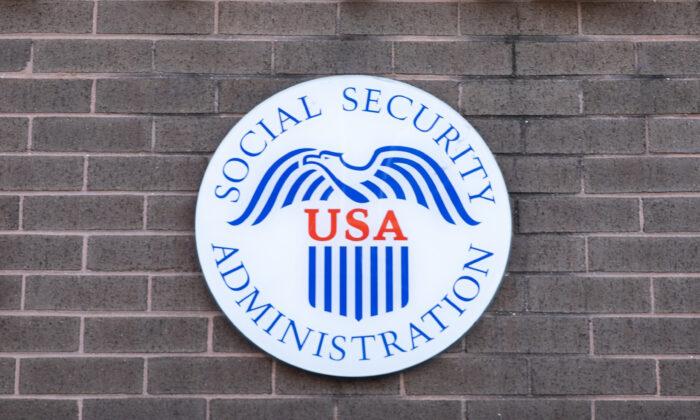It has been my custom for most of the past 24 years to write a year-end column that summarizes the Social Security changes and updates scheduled to take place the following year.
Almost all Social Security beneficiaries are familiar with the most popular and publicized upcoming change: the increase in monthly benefit checks for 2022 due to the automated cost-of-living adjustment (COLA). In fact, Social Security recipients have probably already received a letter from the Social Security Administration telling them of the expected increase.
And even though this is the biggest increase in many decades, I always dread mentioning COLAs in this column, because every single time I do, I am flooded with emails from readers complaining that the increase is not enough.
Yet here’s the rub: Many economists and social planners believe Social Security COLAs are too generous (I’ve explained why in past columns, but don’t have the space to get into that argument today). That’s why most discussions of long-range reform for Social Security include proposals to reduce cost of living increases.
OK, back to the 2022 Social Security COLA. Due to these increases, the average monthly retirement check will be $1,657 in 2022, an almost 100-dollar increase from the 2021 level. The maximum Social Security check for a worker turning full retirement age in 2022 will be $3,345, compared to $3,148 in 2021. And please note that $3,345 is the maximum for someone turning full retirement age in 2022. That does not mean it is the maximum Social Security payment anyone can receive. There are millions of Social Security beneficiaries who get much more than that, primarily because they worked well past their FRA or delayed starting their benefits until age 70.
Although this is a Social Security column, I must mention the upcoming increase in the Medicare Part B premium, which is deducted from Social Security checks for most people. In 2022, the basic Part B premium will be $170.10, a $21.60 increase from the 2021 rate. And as has been the case for 20 years now, wealthy people will pay more than the basic premium.
I don’t want to get into this complicated issue of Medicare premiums other than to make this quick point. Even though they are linked in the minds of most older adults, Social Security and Medicare are entirely separate programs, administered by entirely separate federal agencies, and they have entirely separate rules and regulations regarding their benefit and payment structures. For example, I already explained how Social Security COLAs are figured. The Part B Medicare premium increase has nothing to do with the CPI. Instead, by law, it must be set at a level that covers 25 percent of the cost of running the program. Taxpayers pick up the remaining 75 percent (and again, wealthy people pay more than the 25 percent share).
Another measuring stick, called the “national wage index,” is used to set increases to other provisions of the law that affect Social Security beneficiaries and taxpayers. Specifically, this includes increases in the amount of wages or self-employment income subject to Social Security tax, the amount of income needed to earn a “quarter of coverage,” and the Social Security earnings penalty limits.
The Social Security taxable earnings base will go up to $147,000 in 2022 from $142,800 in 2021. In other words, people who earn more than $147,000 in 2022 will no longer have Social Security payroll taxes deducted from their paychecks once they hit that threshold. This has always been a very controversial provision of the law (Bill Gates pays the same amount of Social Security tax as his plumber). I think it’s a pretty good bet that any eventual Social Security reform package will include an increase in that wage base.
Most people need 40 Social Security work credits (sometimes called “quarters of coverage”) to be eligible for monthly benefit checks from the system. In 2021, people who were working earned one credit for each $1,470 in Social Security taxable income. But no one earns more than four credits per year. In other words, once you have made $5,880, your Social Security record has been credited with the maximum four credits or quarters of coverage. In 2022, the one-credit limit goes up to $1,510, meaning you will have to earn $6,040 this coming year before you get the maximum four credits assigned to your Social Security account.
People younger than their full retirement age who get Social Security retirement or survivors benefits, but who are still working are subject to limits on the amount of money they can earn and still receive all their Social Security checks. That limit was $18,960 in 2021 and will be $19,560 in 2022. For every two dollars a person earns over those limits, one dollar is withheld from his or her monthly benefits.
There is a higher earnings threshold in the year a person turns full retirement age that applies from the beginning of the year until the month the person reaches FRA (the income penalty goes away once a person reaches that magic age). That threshold goes up from $50,520 in 2021 to $51,960 in 2022.
A couple of other Social Security provisions are also affected by inflationary increases. For example, people getting disability benefits who try to work can generally continue getting those benefits as long as they are not working at a “substantial” level. In 2021, the law defined substantial work as any job paying $1,310 or more per month. In 2022, that substantial earnings level increases to $1,350 monthly.
Finally, the Supplemental Security Income basic federal payment level for one person goes up from $794 in 2021 to $841 in 2022. SSI is a federal welfare program administered by the SSA, but it is not a Social Security benefit. It is paid for out of general revenues, not Social Security taxes.






Friends Read Free